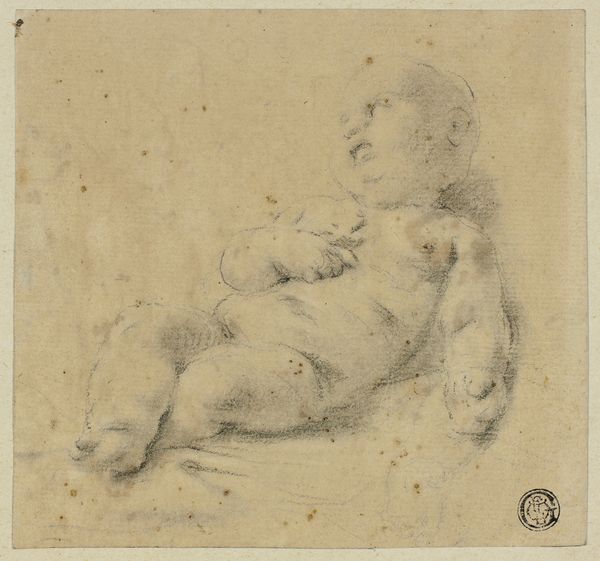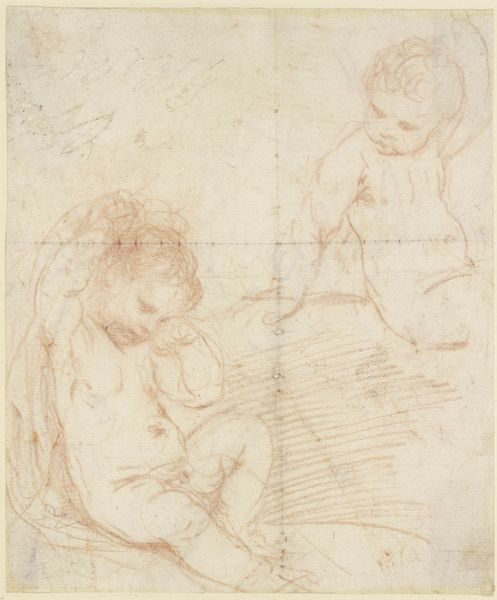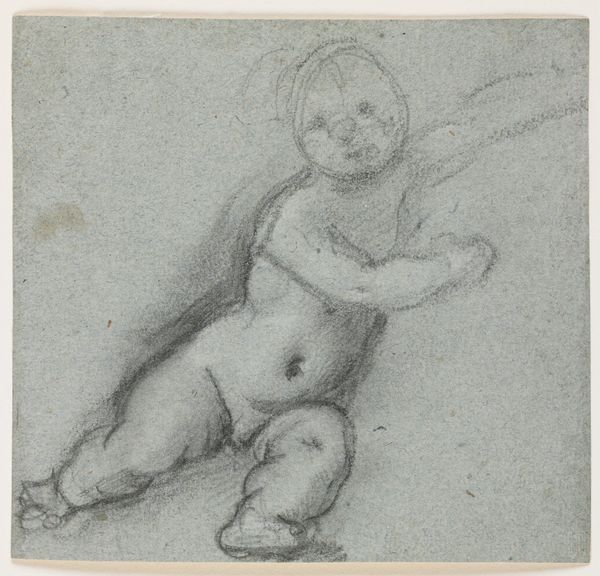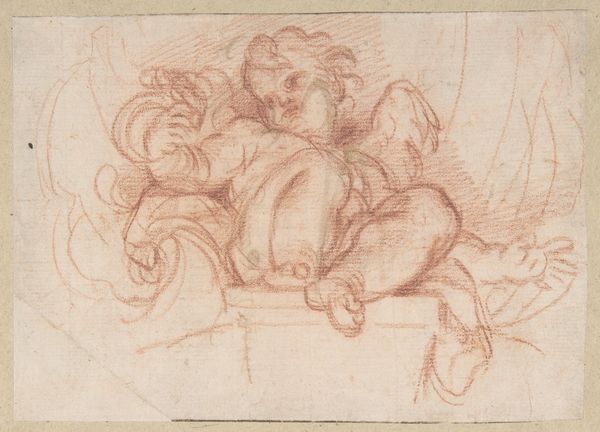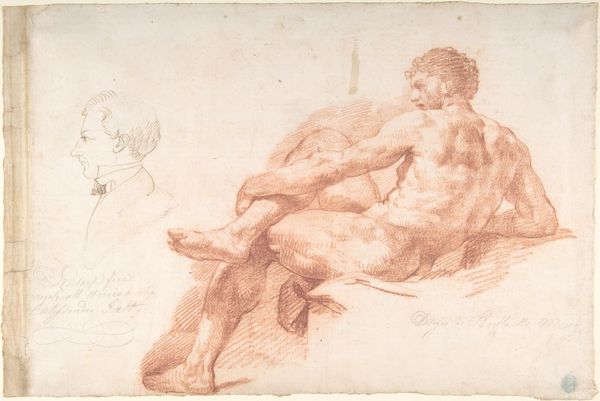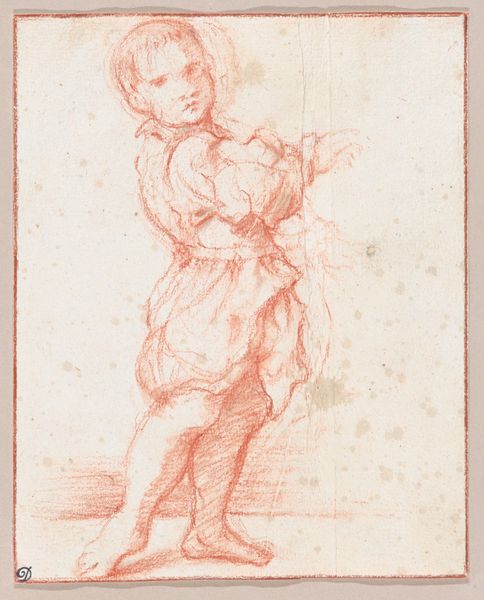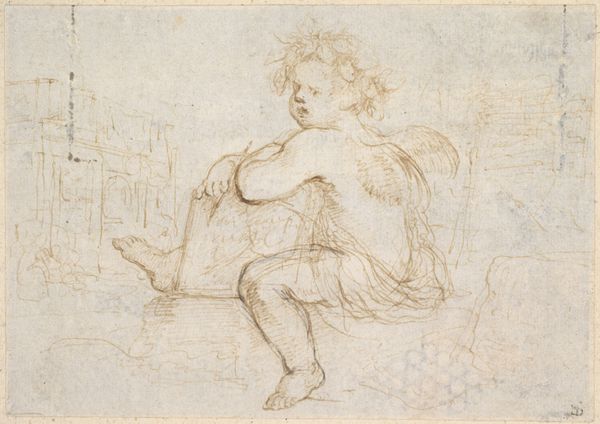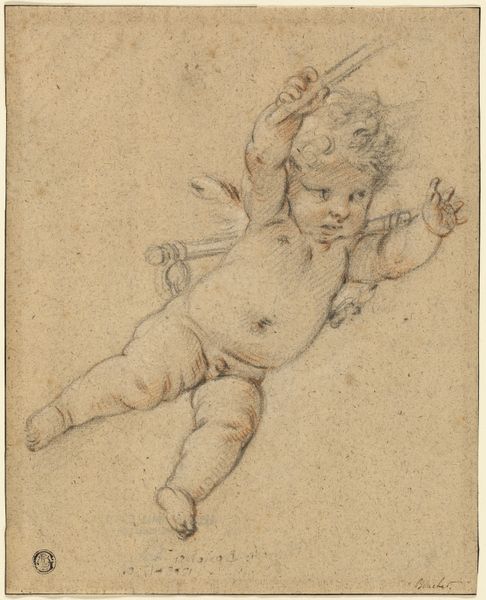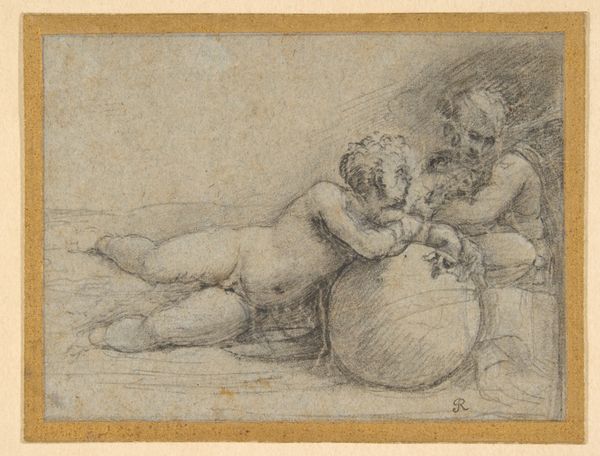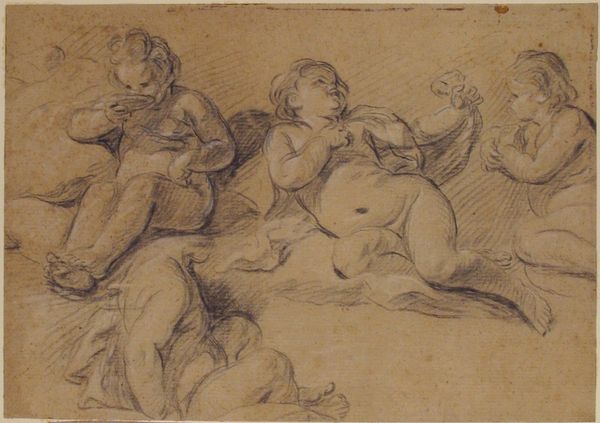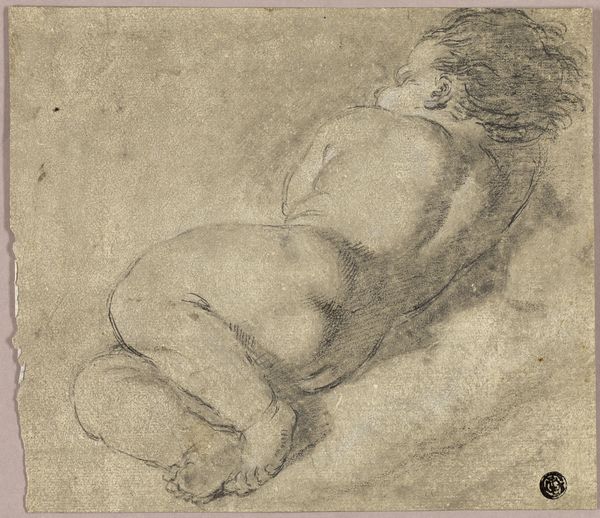
drawing, pencil
#
drawing
#
baroque
#
figuration
#
pencil
#
watercolor
Dimensions: 136 mm (height) x 151 mm (width) (bladmaal)
This is Joachim von Sandrart’s delicate drawing in red chalk, "Putti samler frugt." Sandrart was a German Baroque artist active during the 17th century, a period marked by grand displays of power and opulence. The cherubic figures, or putti, were a popular motif in Baroque art, often symbolizing innocence and divine love. But consider this image in the context of its time. Europe was emerging from religious conflict with rigid social hierarchies. What does it mean to depict these carefree, infant-like figures gathering fruit, seemingly oblivious to the world's troubles? Is this image a form of escapism, or a reflection of a longing for simplicity and harmony? The putti are rendered with soft, flowing lines, evoking a sense of movement and playfulness. Yet, there's also a certain artificiality to the scene. The putti are idealized, their bodies smooth and plump. It makes you wonder about the social conditions that allowed for such idyllic imagery to flourish.
Comments
No comments
Be the first to comment and join the conversation on the ultimate creative platform.

